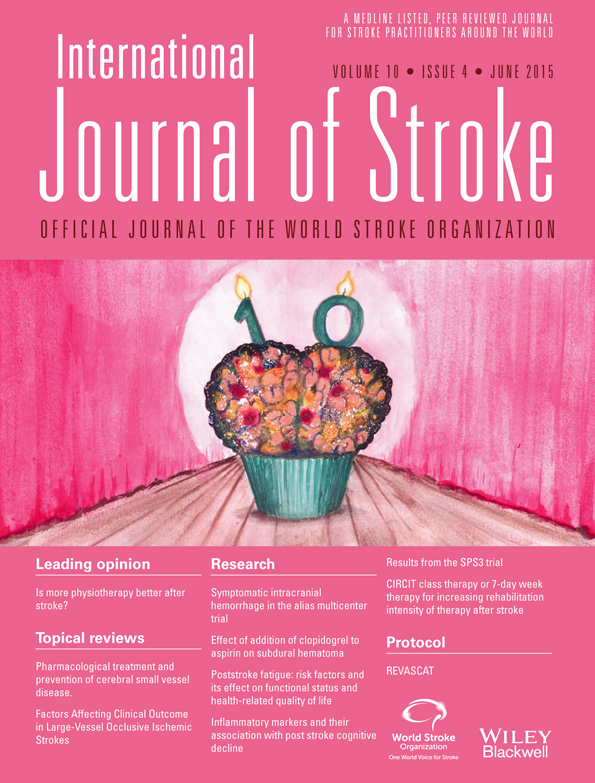Long-term mortality in patients with coexisting potential causes of ischemic stroke
Abstract
Background
Multiple potential causes of stroke may coexist in ischemic stroke patients, which may affect long-term outcome.
Aim
We investigated whether there are differences in long-term mortality among stroke patients with coexisting potential causes.
Methods
We evaluated the long-term all-cause mortality and stroke or cardiovascular mortality of ischemic stroke patients with multiple potential stroke mechanisms, large artery atherosclerosis, cardioembolism, small vessel occlusion, and negative evaluation admitted to a single center between January 1996 and December 2008. Mortality data were obtained from a National Death Certificate system.
Results
Total 3533 patients were included in this study: 286 multiple potential mechanisms (138 large artery atherosclerosis + cardioembolism, 105 small vessel occlusion + large artery atherosclerosis, 43 small vessel occlusion + cardioembolism), 1045 large artery atherosclerosis, 701 cardioembolism, 606 small vessel occlusion, and 895 negative evaluation. During a mean follow-up of 3·9 years, as referenced to small vessel occlusion mortality rate, the adjusted mortality hazard ratio was 4·387 (95% confidence interval 3·157–6·096) for large artery atherosclerosis + cardioembolism group, 3·903 (95% confidence interval 3·032–5·024) for cardioembolism group, and 2·121 (95% confidence interval 1·655–2·717) for large artery atherosclerosis. The risk of long-term ischemic stroke mortality or cardiovascular mortality also showed comparable findings: highest in the large artery atherosclerosis + cardioembolism, followed by cardioembolism, and large artery atherosclerosis groups. However, the outcome of small vessel occlusion + large artery atherosclerosis or small vessel occlusion + cardioembolism group was not significantly different from that of small vessel occlusion.
Conclusions
Coexisting potential causes of ischemic stroke impact on long-term mortality. Identification of coexisting potential causes may help to predict stroke outcomes and to guide planning secondary prevention strategies.




